Mount Goliath Wildflower Hike (1/2)
M. Walter Pesman Trail
Mount Goliath Research Natural Area and Dos Chappell Nature Center
Arapahoe National Forest
Mount Evans, Idaho Springs, Colorado July 10, 2012 This is a wildflower hikes that follow the Mount Goliath M. Walter Pesman Trail -- a moderately difficult, 1.5 mile downhill trek, starting from the upper parking lot at 12,153 ft. (3,704 meter) to the Dos Chappell Nature Center at 11,540 ft. The trail runs mostly at the south facing slope of the Mount Goliath. There is a 0.5-mile trail loop at the upper trailhead that is an easier hike. Also, there is a nature garden at the Dos Chappell Nature Center.
Discover the life cycles and lore of the alpine tundra and the intense beauty of a natural garden that lasts only 40 frost-free days. This is a trail of contrasts--awesome Rocky Mountain vistas of the Divide peaks; delicate floral treasures; wind-sculpted, ancient bristlecone pines (1,600 years old); cold summit winds; and gentle summer breezes. The path winds through the exquisite blooms of the alpine tundra, talus slopes and subalpine meadows providing a delightful and educational hike in one of Colorado's most beautiful natural areas.
(Source: partially from the Internet)
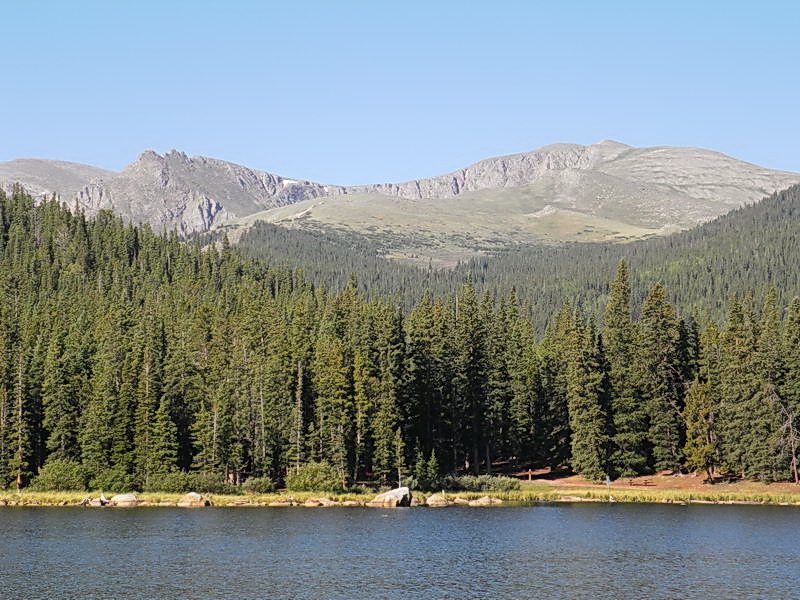
From westbound I-70 from Denver, there's an exit at Idaho Springs for Mount Evans. Follow Colorado Hwy 103 for 13 miles to the Echo Lake. At the Echo Lake Lodge, get off the main road into Colorado Hwy 5 (Mount Evans Scenic Byway) that leads to the summit of Mount Evans (14,265 feet, 4,348 m) in 15 miles. This is the highest paved highway in North America, reaching above 14,000 feet, only open during the summer season. This is a picture of the Echo Lake with the massif of Mount Evans in the background. It was a beautiful day in early July. I was glad to have cancelled the darn stupid golf game at the Meadow Hills Golf Course this morning. 
Right after passing the Echo Lake, the junction comes at right. There's is a fee station by U. S. Forest Service, charging $10 for the use of this road to the summit. It was just two days ago when the final federal court settlement was made not to charge the road fee any more. Apparently the executive order had not reached here and I was asked to pay $10, becoming one of a few last persons who paid the fee as a form of double taxation as claimed by the Colorado activists. I could have refused to pay and they had no choice but to allow me to go on. I will get a citation of no compliance that had never been enforced before. I didn't mind paying the double taxation at such a wonderful place. The forest ranger seemed to be in a low tone and apologetic. I didn't say anything and paid my due. I am always grateful to the rangers of National Forest Service and National Parks. They are the true public servants in the grass root of this nation.  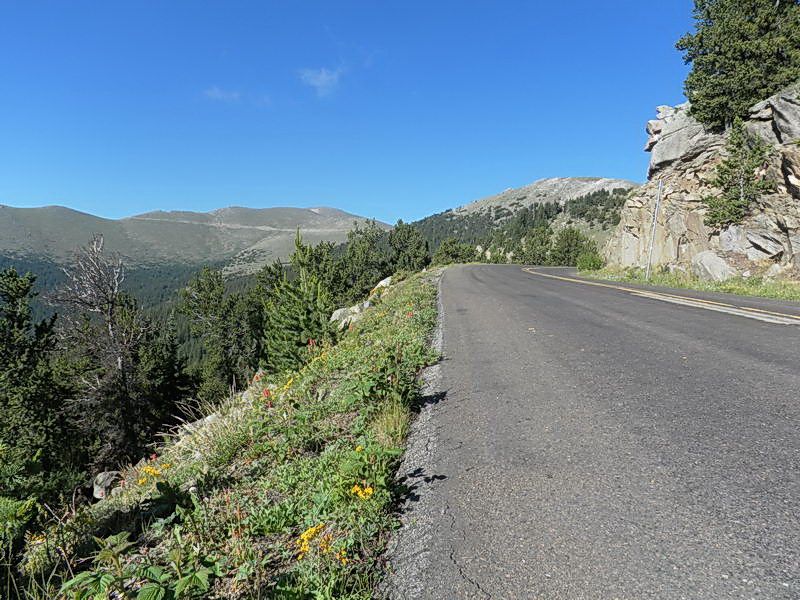
You can see the summit highway extending all the way to the far side of the background mountain.
As you see, there are no guard rails here. The road makes a lot of people dizzy. I stopped the car at the roadside for a few pictures.
This is a southern face of the mountain.
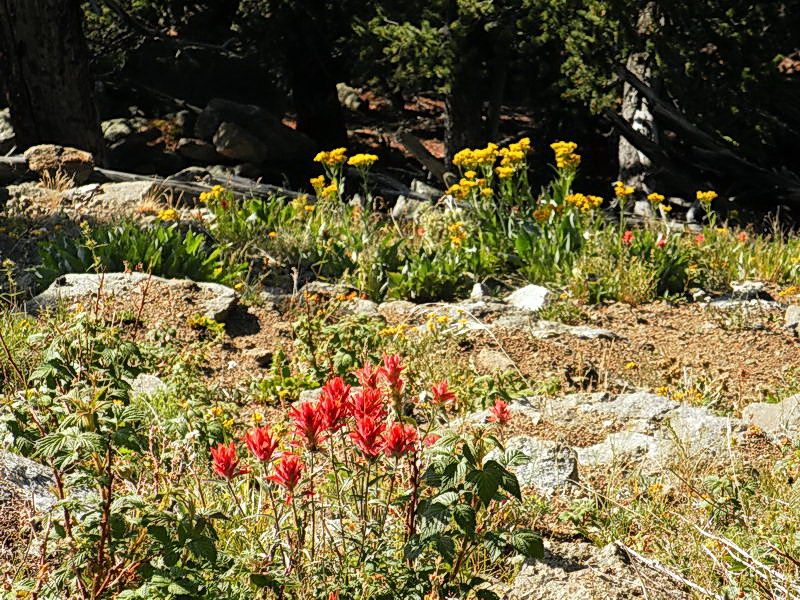
Scarlet Paintbrushes in front (red) and Triangle-Leaved Ragwort further down (yellow).
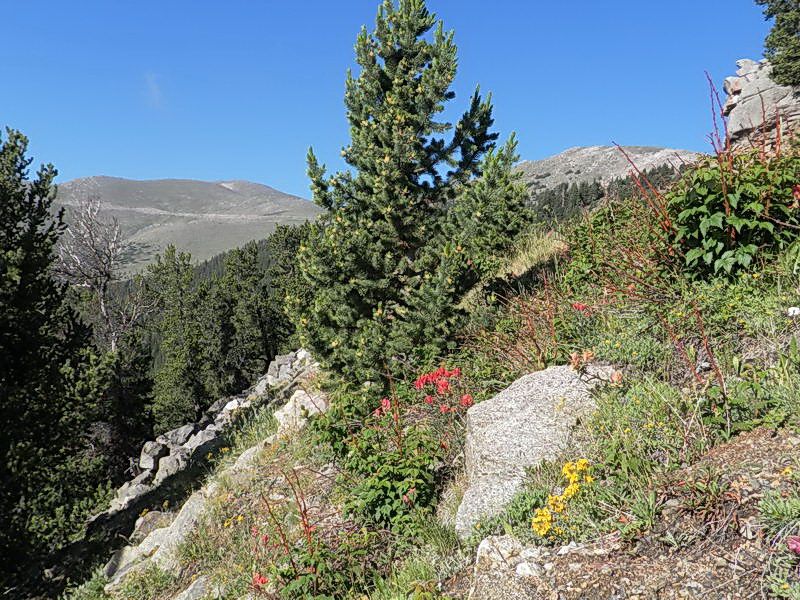
For a better picture, I climbed down a bit below the road.
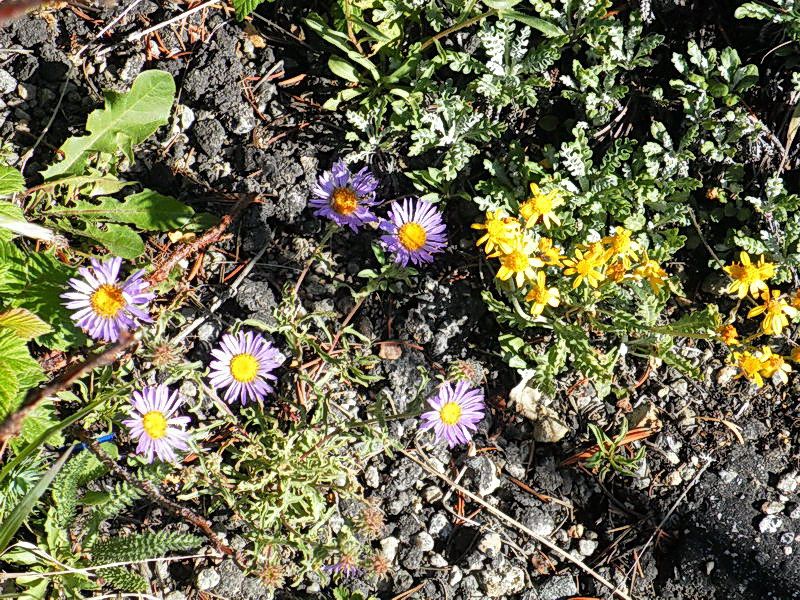
A group of Pinnate-Leaved Daisy (violet) and Western Golden Ragwort (yellow)
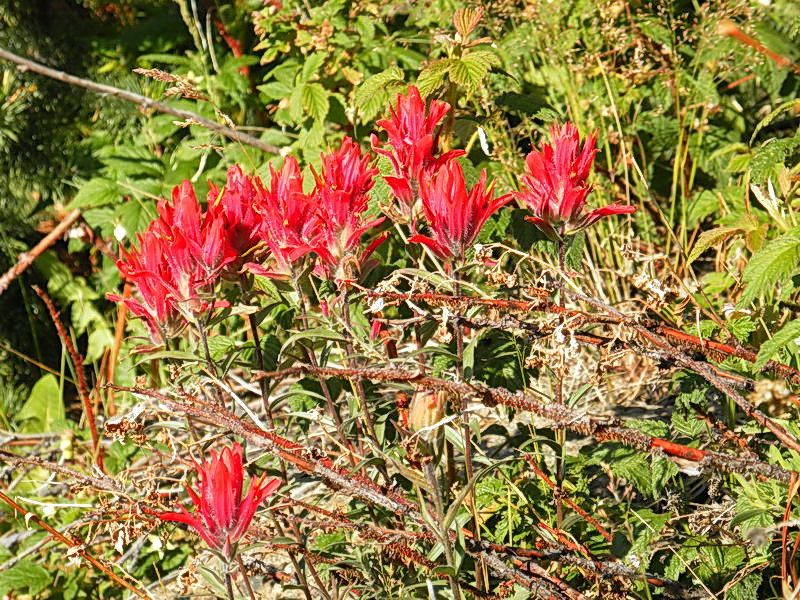
Red (Scarlet) Indian Paintbrush in fiery red color in the morning sun

At 11,540 feet high, the nature garden at Dos Chappell is the highest botanical garden in the world, established in 2003. The seeds are only from the Mount Evans and were grown at the Denver Botanical Garden and then transfered back here.
Many attempts were made to transfer the bristlecone pines from other places but always failed. There must be something that limits the particular strain to survive at the particular place. Mount Goliath Trail was established in 1958 mainly to preseve the bristlecone pines growing at this location. Some of the oldest trees are about 1,500 years old. Some of the dead trunks still left on the slope are more than 2,000 years old.
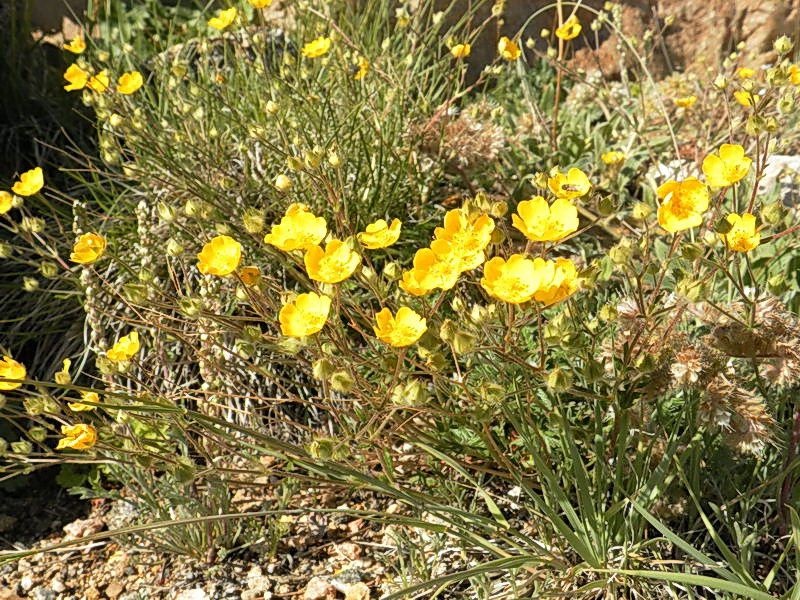
Varileaf Potentilla (Potentilla diversifolia) with cup-like yellow flowers and palmate leaves.
(rather than pinnate leaf in Alpine Avens)
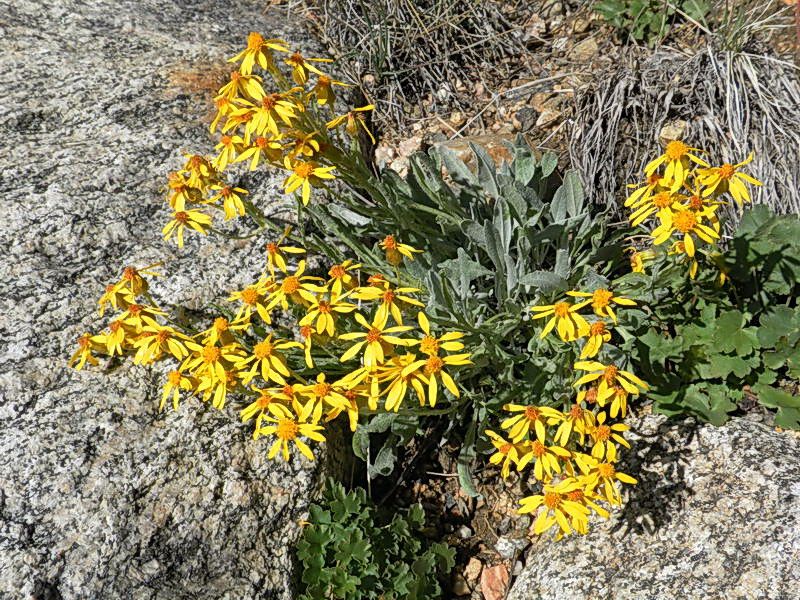
Early Spring Senecio (Groundsel, Ragwort)
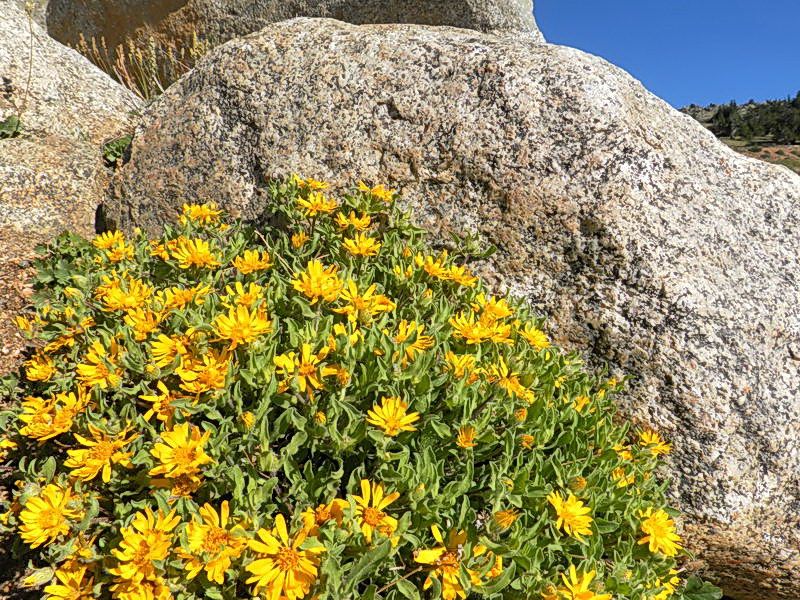
Golden Aster at the sunny side of a rock boulder
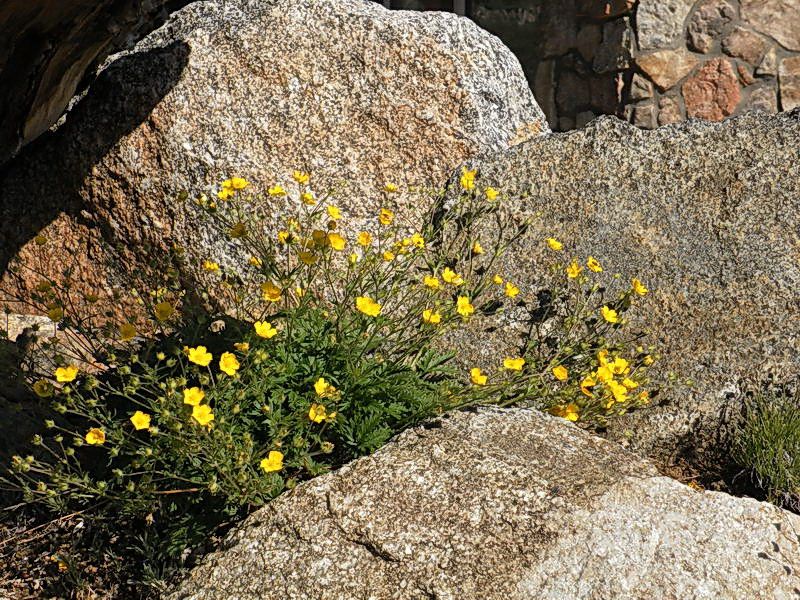
Varileaf Potentilla (Potentilla diversifolia) growing between rocks.
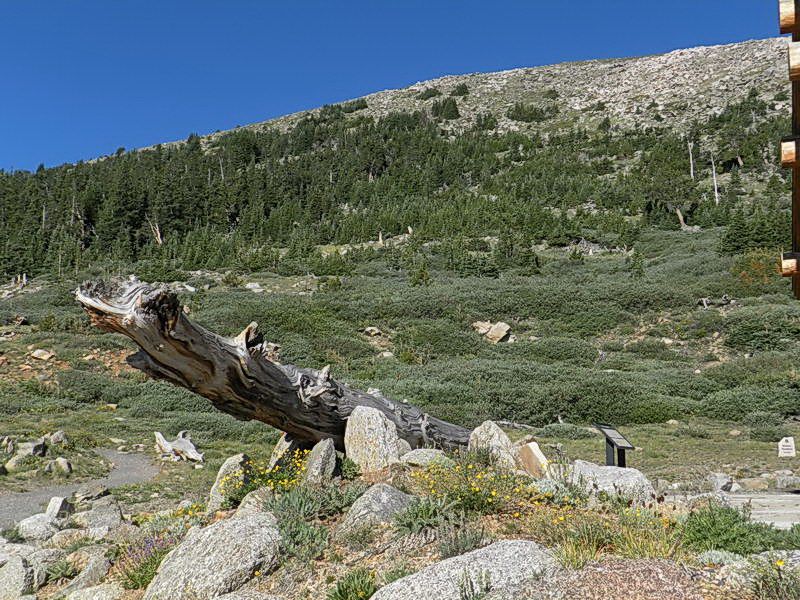
Southeastern Foothills of Mount Goliath at the Nature Center garden
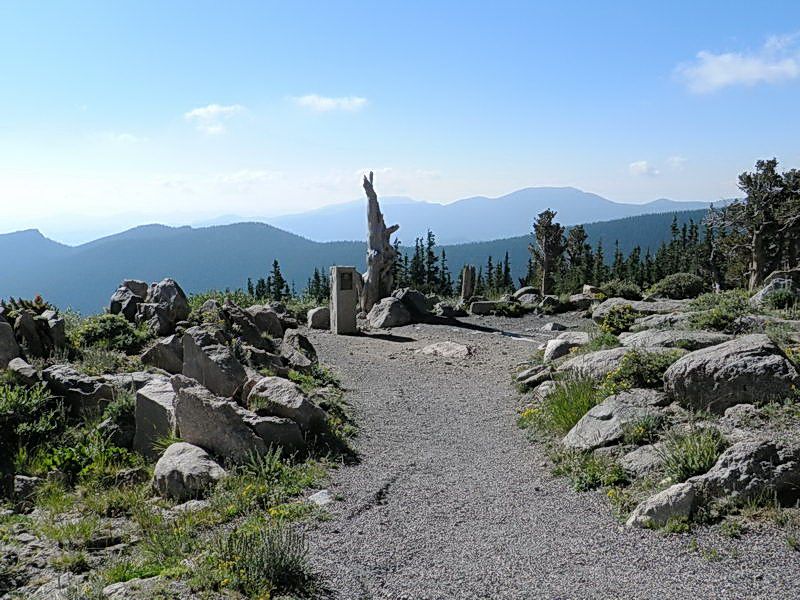
Walking paths at the Nature Center
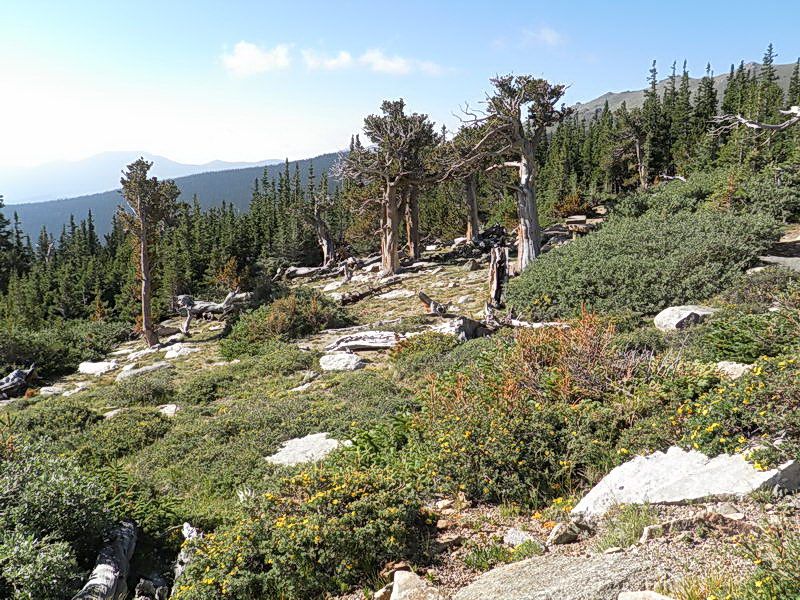
Farther west, there is a forest of Rocky Mountain bristlecone pines.
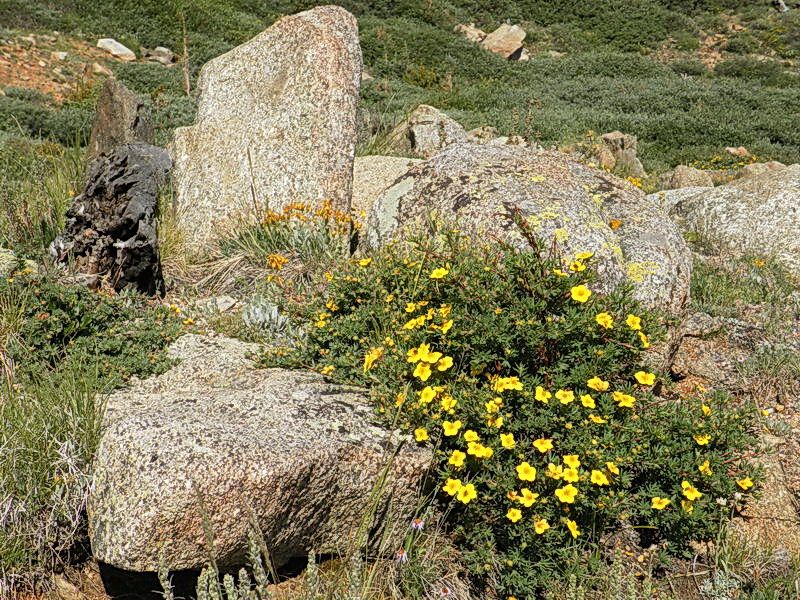
Shrubbery Cinquefoil with five-petal yellow flowers forming a bush shape.
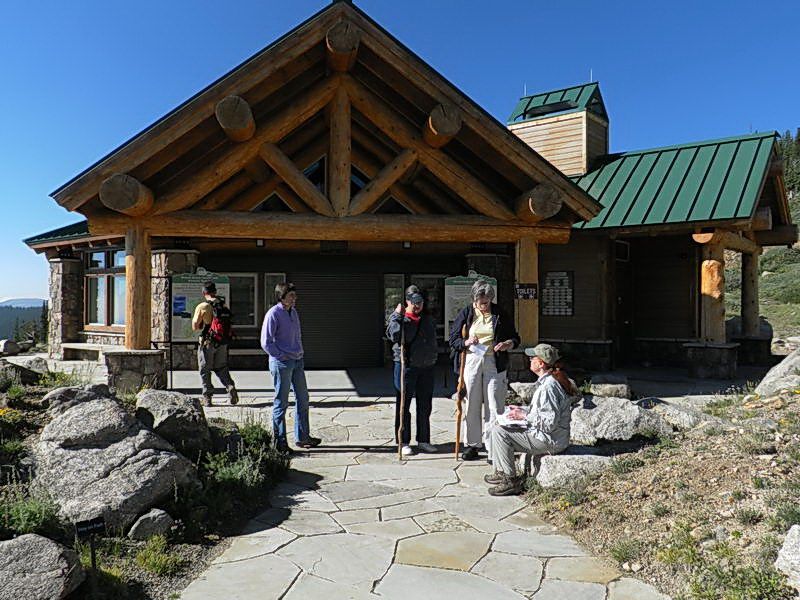
Deborah Darnell, One of the docent in the Adult Program of Denver Botanic Gardens (sitting), meets students of today.
Denver Botanic Gardens, 909 York Street, Denver, CO 80206 (720-865-3539, the coordinator: LeonL@botanicgardens.org.)
Two other docents came with us. They were Chris Pfaff and Alan Richardson.
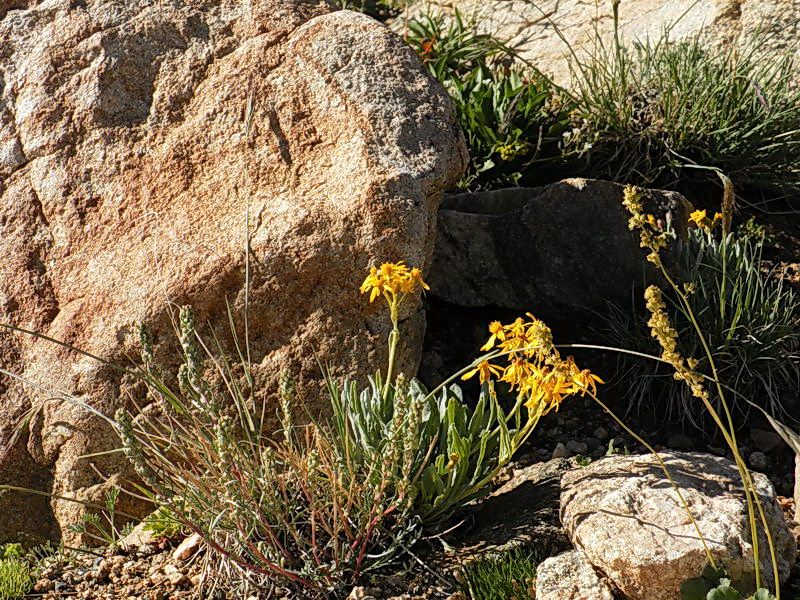
Early Spring Senecio (yellow) and Small-leaved Alumroot (green)
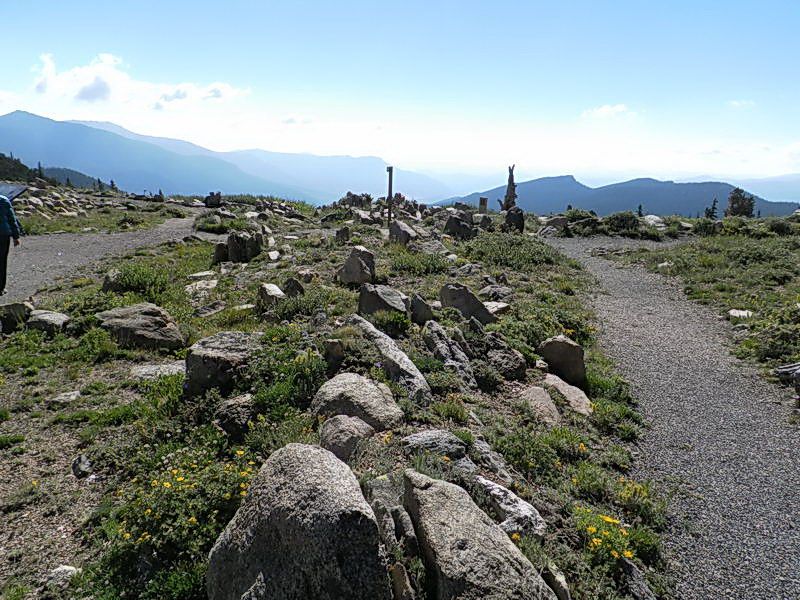
Distant view toward southeast from the Nature Center
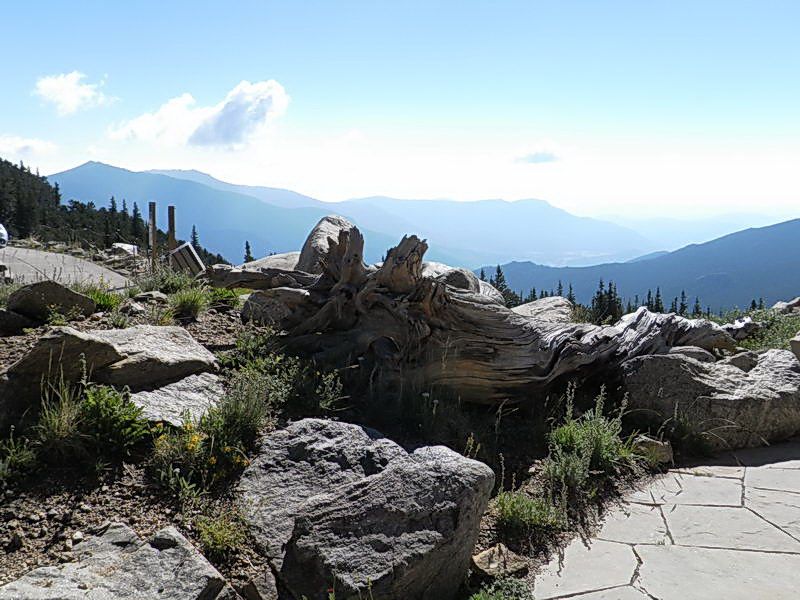
 Mount Evans Scenic Byway and the Pesman Trail Mount Evans Scenic Byway and the Pesman Trail 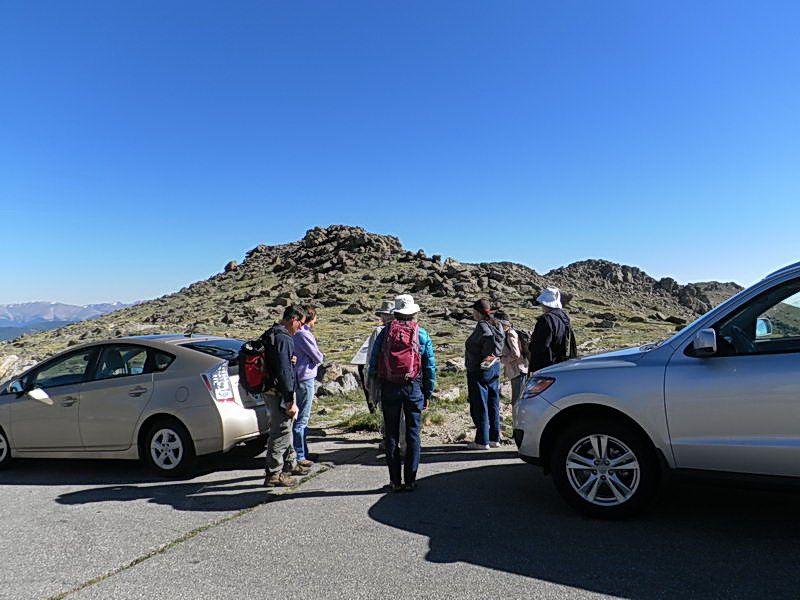
Our tour group arriving at the upper trailhead
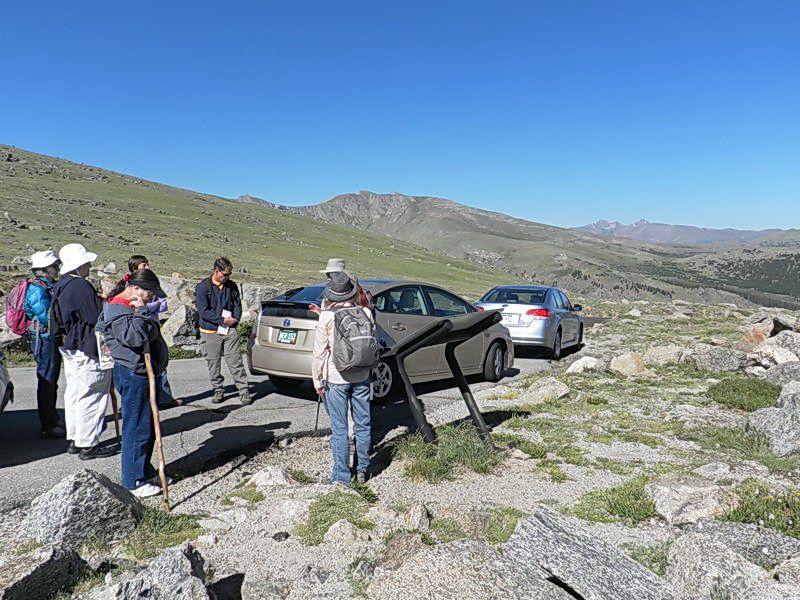
Grays and Torreys Peaks at the Far right background (I bagged both of them last year). In the middle background is the east face of Mount Evans (I am under training to climb it in August this year from the west face where there's no highway).
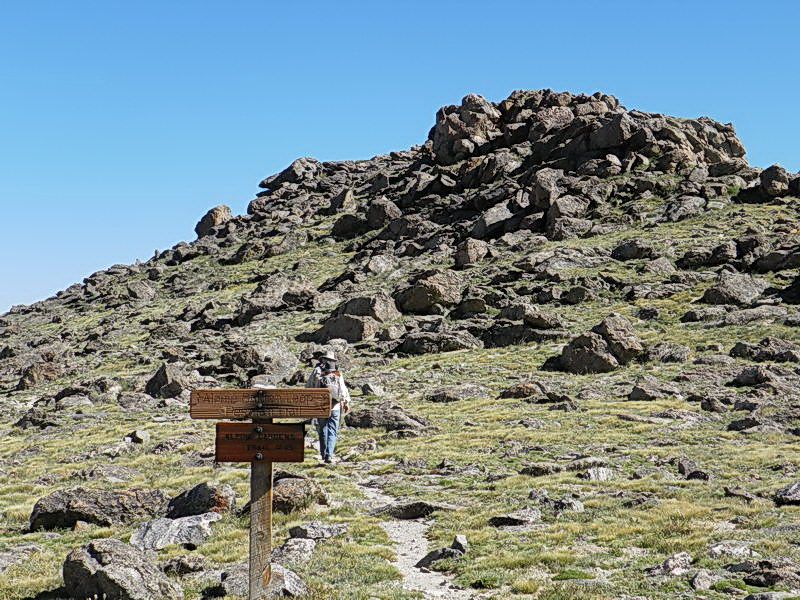
The beginning of the Pesman Trail of Mount Goliath. Alan went ahead of us while Deborah and Chris stayed with us.
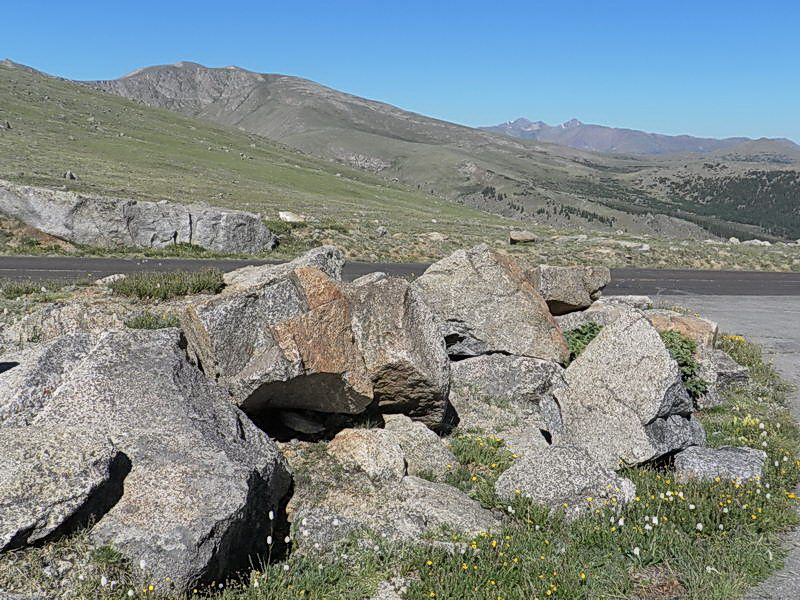
According to our guide, high alpine plants have 6-inch rule in general, meaning most plants at this altitude do not exceed 6 inches in height. They mostly have small leaves but have larger flowers than their cousins in the lower altitudes. Also, rather than solitary, they tend to stay as clumps, rosette formation, or matt formation to adapt to desert or high altitude. Most of them are perennials. Annuals can not survive well because of the short growing season in the high altitude.
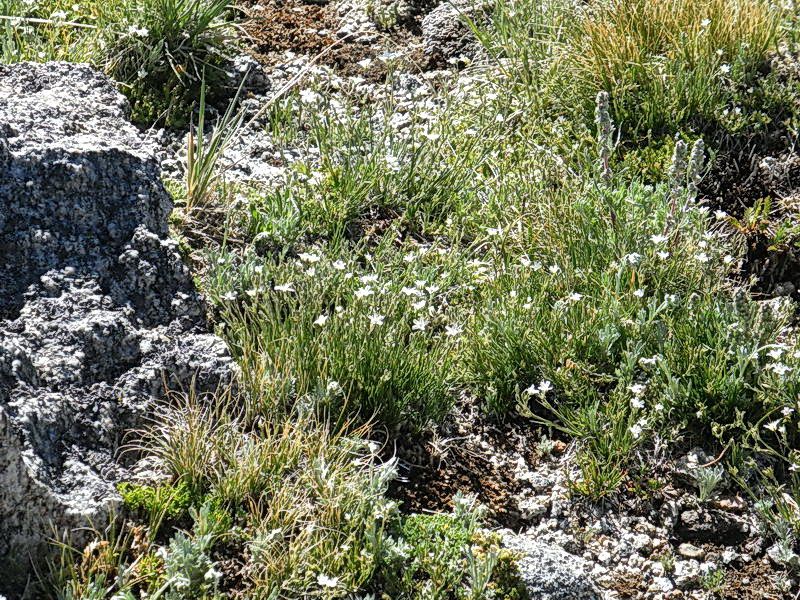
Fendler Sandwort , small star-like white flowers on taller stem (but less than 6 inches).
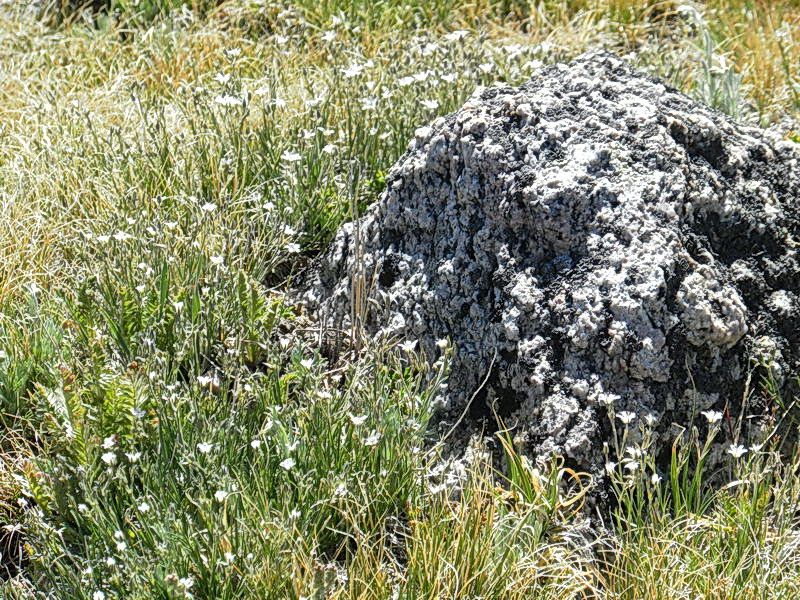
Fendler Sandwort here (while Alpine Sandwort are much shorter and form cushion pad instead. They have short white flowers.)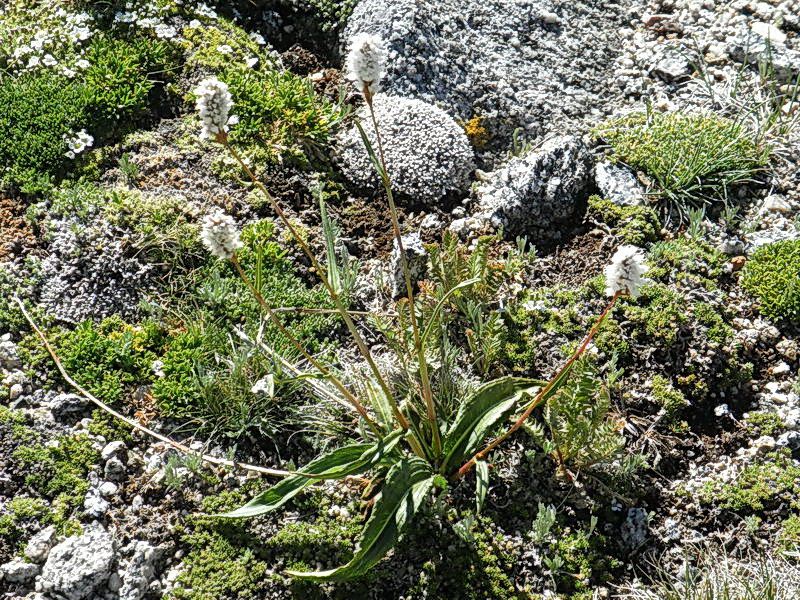
American Bistort: White bulbous heads. It has stem leaves. This one is one exception to the 6-inch rule.
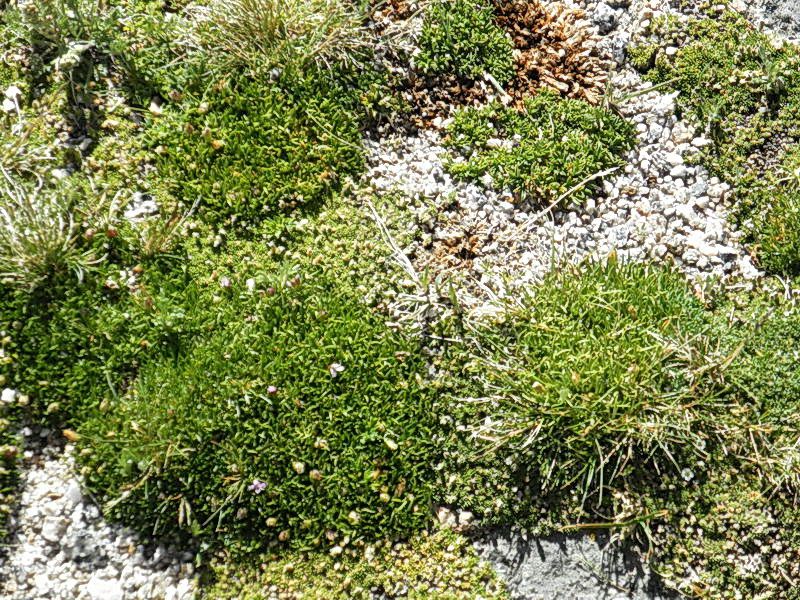
Moss campion: They form a tight cushion together. Flowers are small pink.

Dwarf Goldenweed: Yellow Daisy-like flower on cushion at left. Similar to Golden Flower (Stretched petals)
Here, they are growing through a cushion of another plant (Moss Campion).

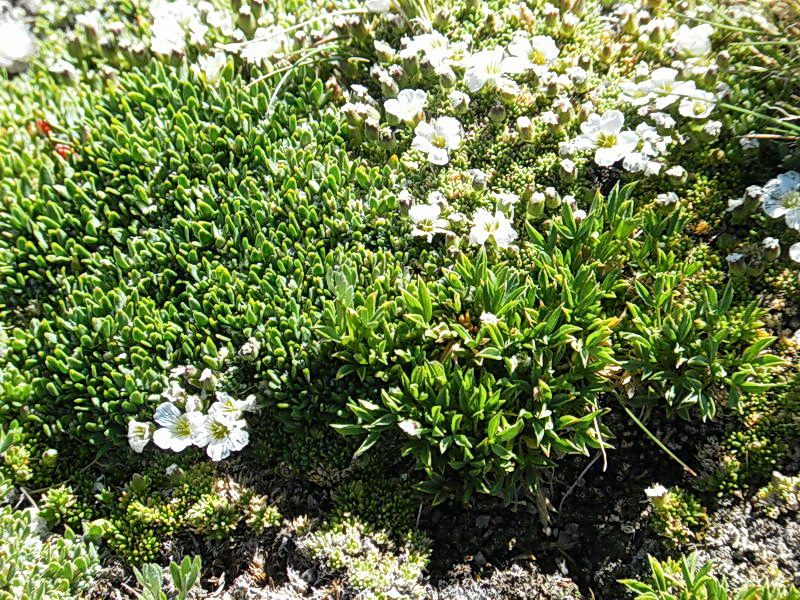
White flower, 5 petals, Unknown
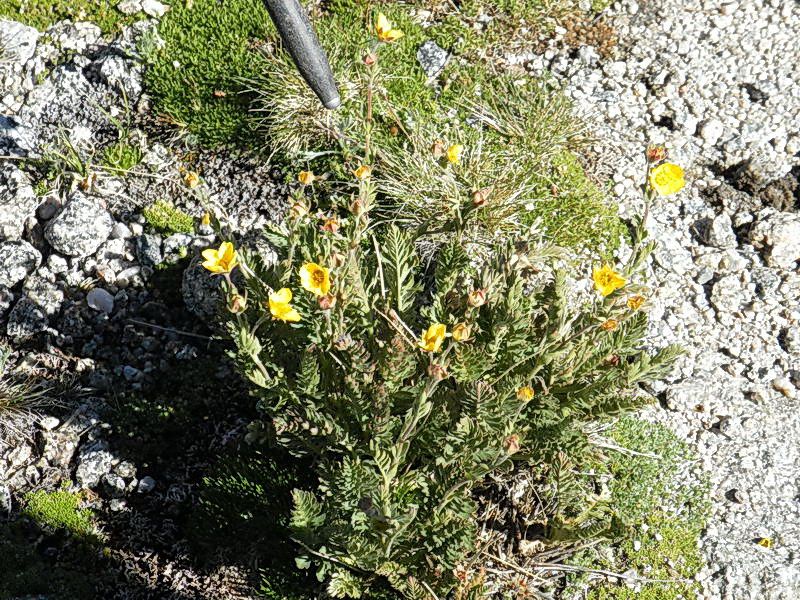
Alpine Avens: 5 bright yellow petals, feather-like leaves turn red in fall (alredy turning red here)
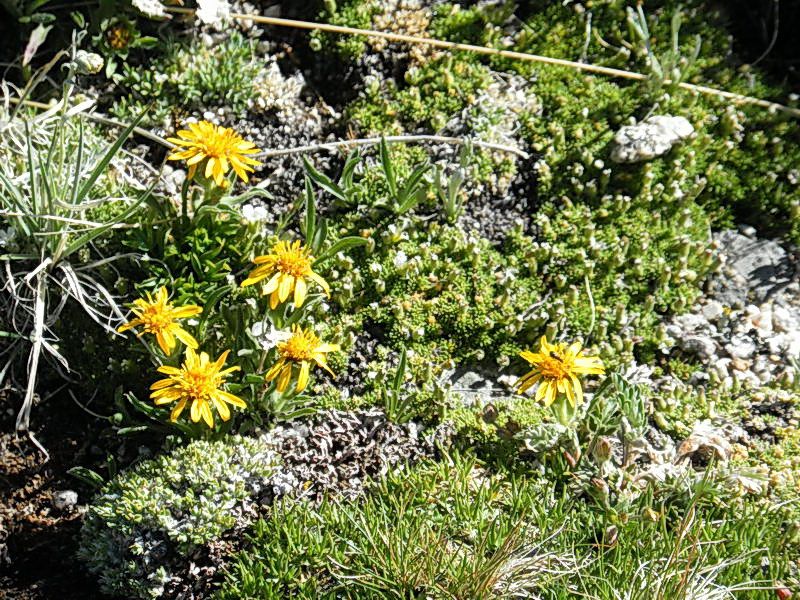
Dwarff Goldenweed growing from a cushioned leaves 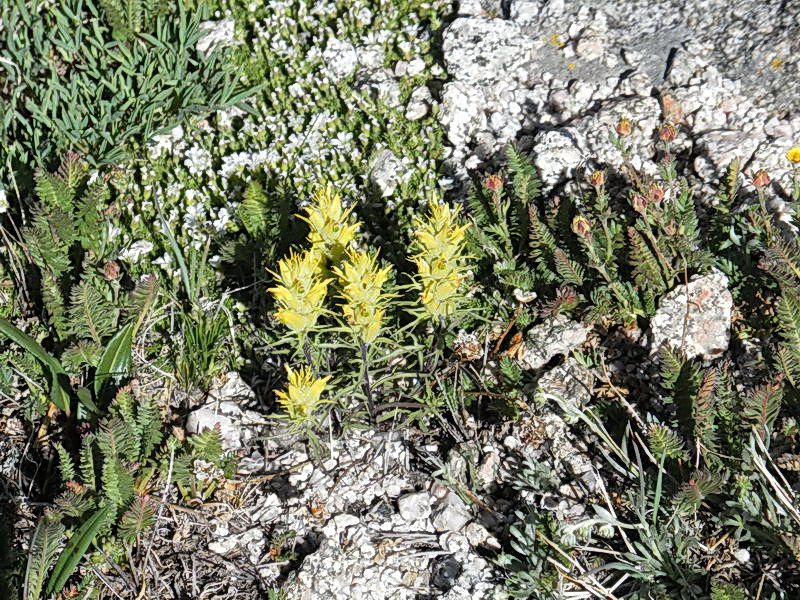
Alpine Paintbrush: Greenish yellow. Alpine Avens on both sides.
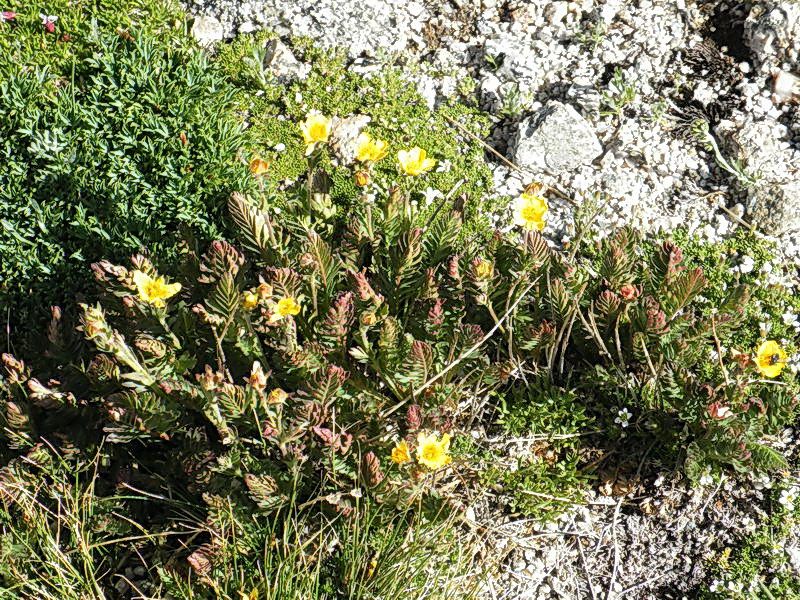
Alpine Avens: 5 bright yellow petals, feather-like leaves turn red in fall (alredy turning red here). The red color in the leaves and stems is from a chemical, Anthocyanin, that acts as an antifreeze.
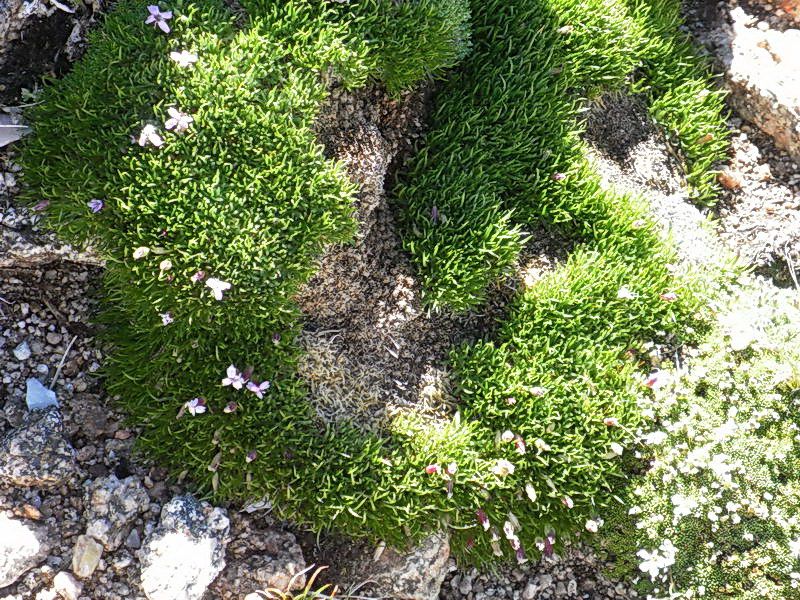
Unknown cushioned plant
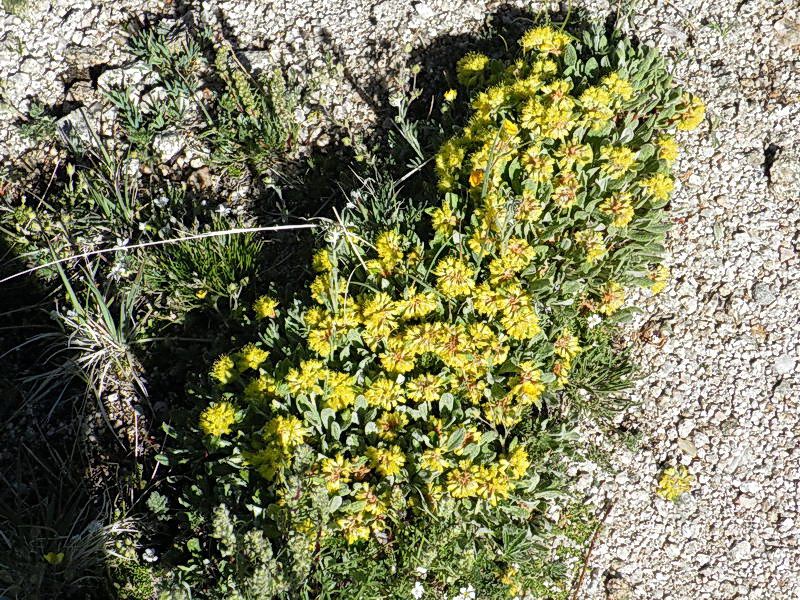
Alpine Sulphur Flower (Eriogonum jamesii xanthum or E. flavum): Yellow on cushion, large size.
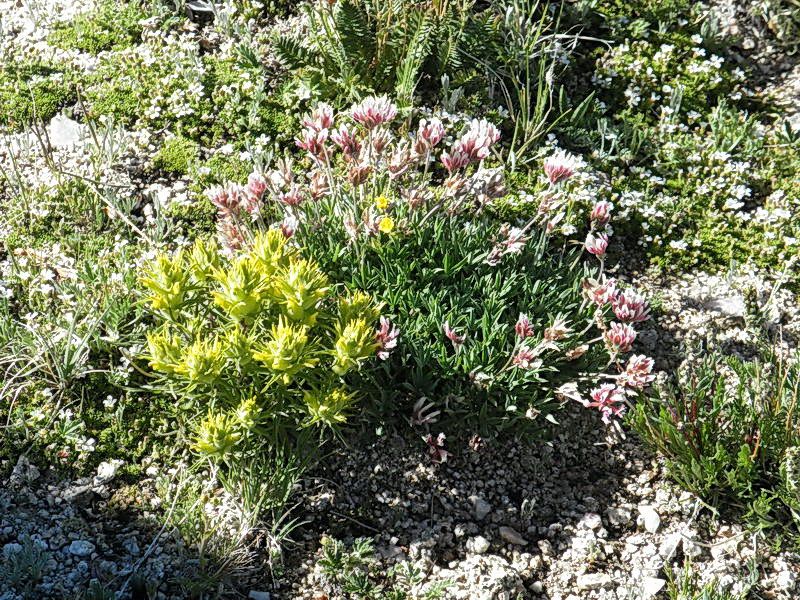
Alpine Paintbrush (yellowish green at left) and Alpine Clover (red and white at right upper)
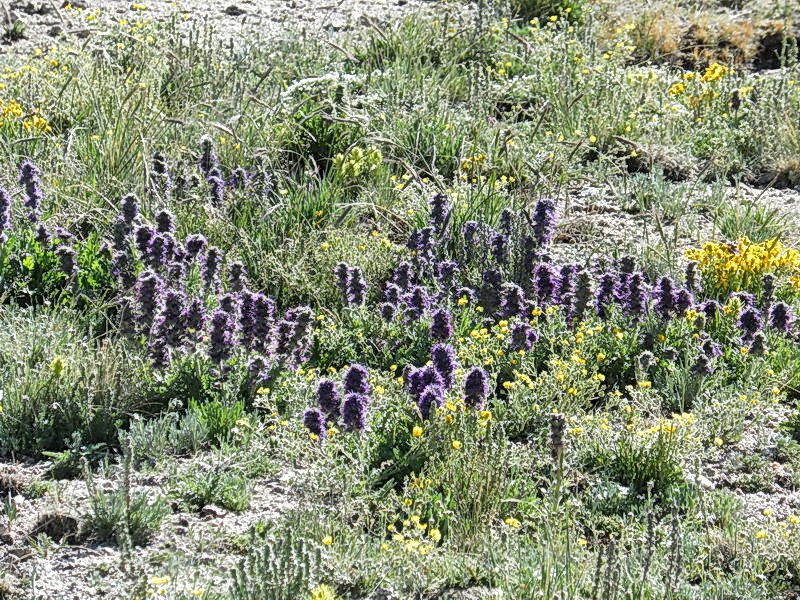
A group of Purple Fringes (Phacelia sericea): Appears as a big bottle-scrubber but composed of many tiny purple flowers on closer look
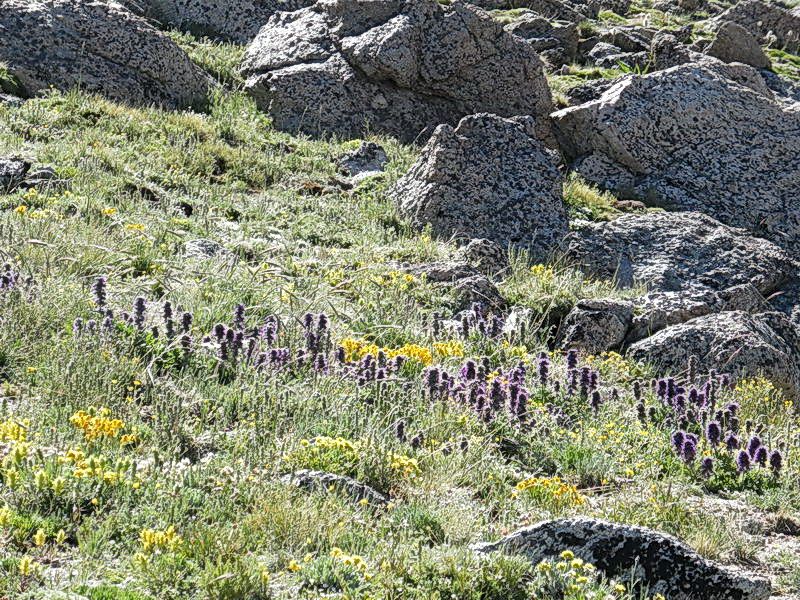
Purple Fringe (Phacelia sericea)
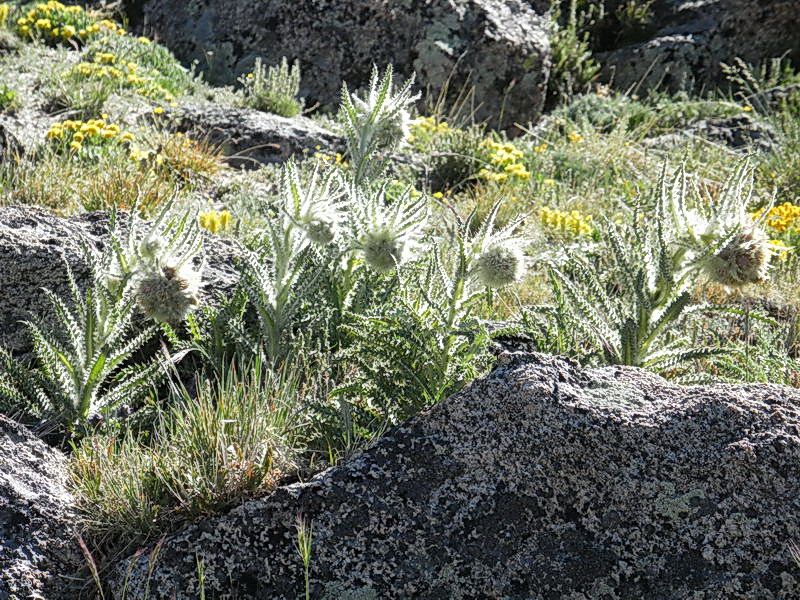
Woolly Thistle. They grow in high altitude.
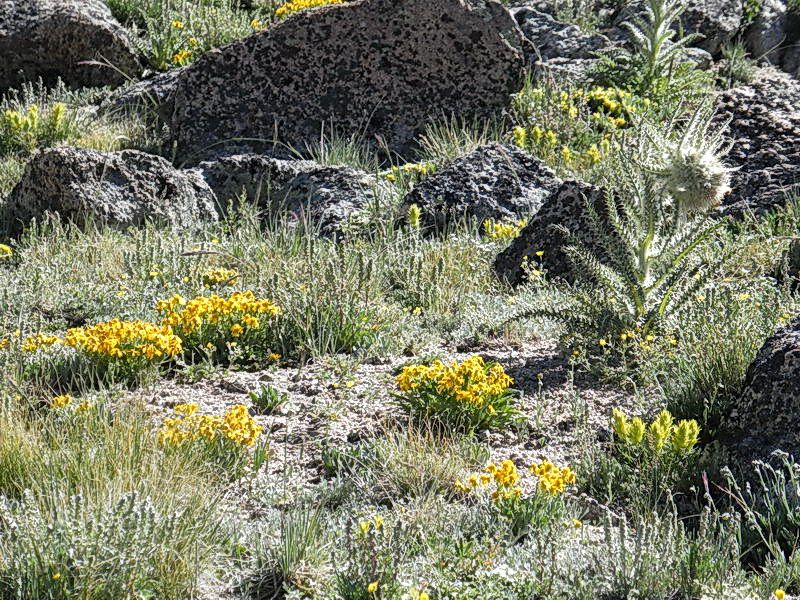
Early Spring Senecio (yellow, middle), Alpine Paintbrush (right lower), and Woolly Thistle (white, right upper)
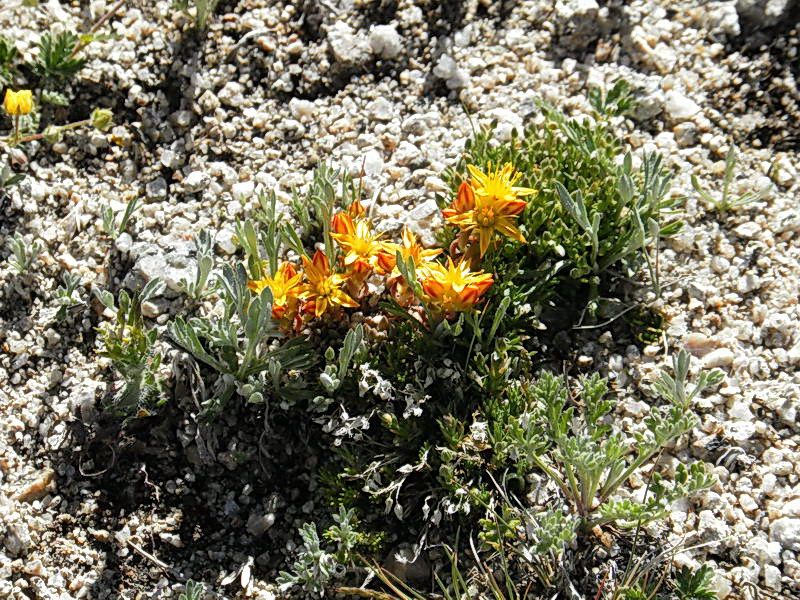
Yellow Stone crop: Genus Sedum, a succulent plant
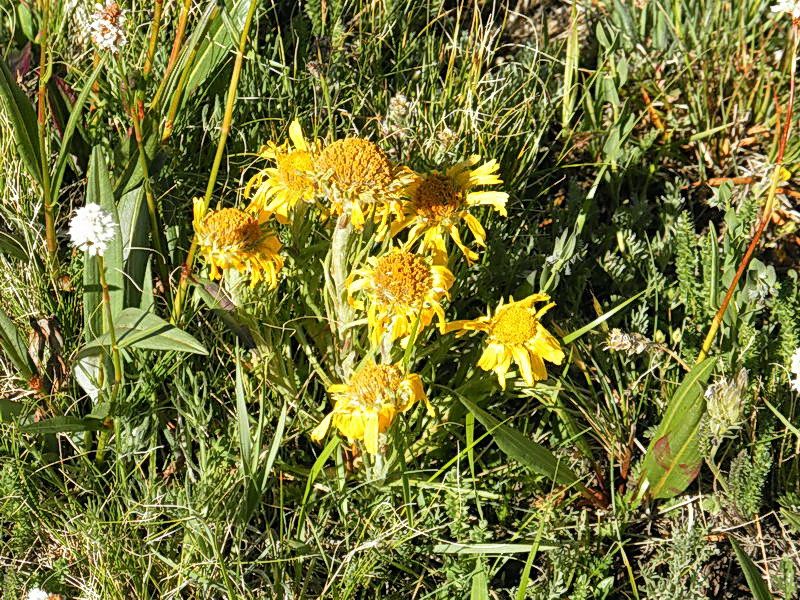
Old-Man-of-the-Mountain: It takes 8-12 years for the plant to bloom, tend to be large and tall.
They usually face east away from the wind to attract the pollinators.

Old-Man-of-the-Mountain (yellow) and American Bistort (white bulb in front)
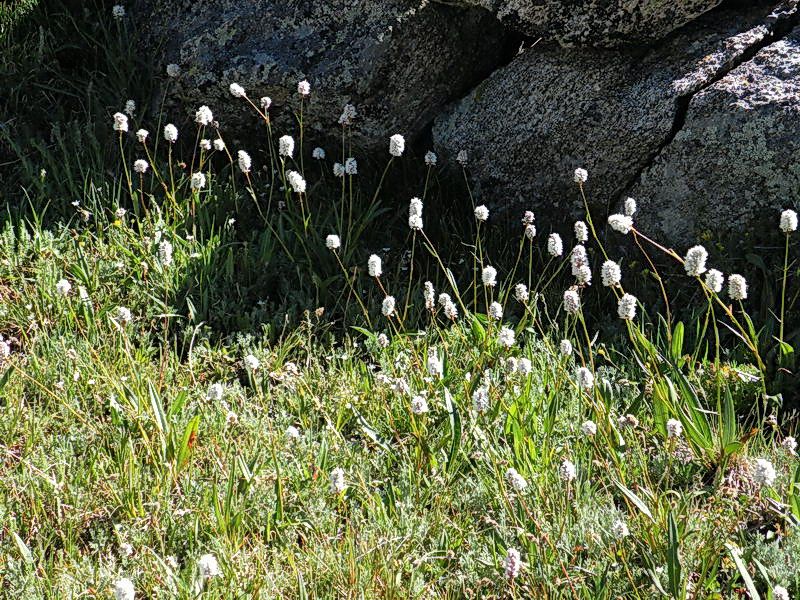
A group of American Bistort
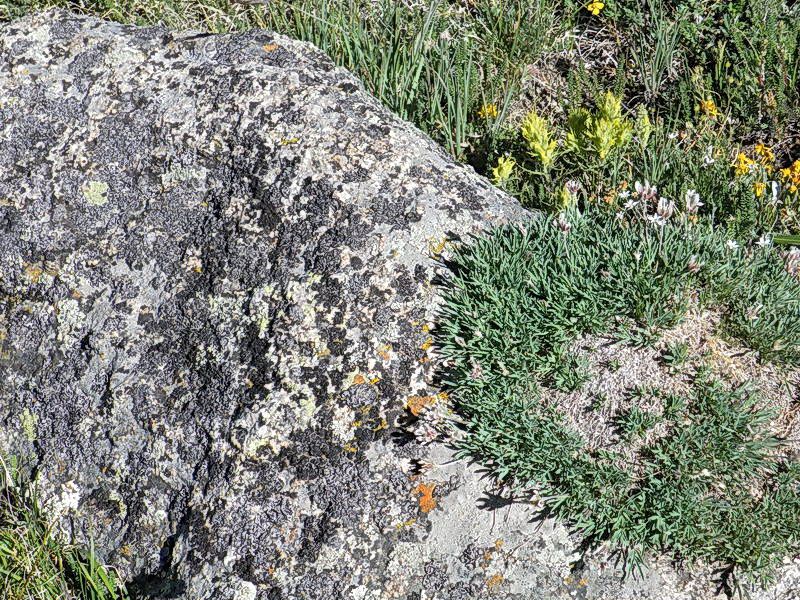
Lichens on the rock surface: Oldest living thing, in geographic shapes. They are composite organisms consisting of a symbiotic relationship between a fungus (the mycobiont) and a photosynthetic partner (the photobiont or phycobiont), usually either a green alga (commonly Trebouxia) or cyanobacterium (commonly Nostoc). It takes hundreds of years to form a single patch.
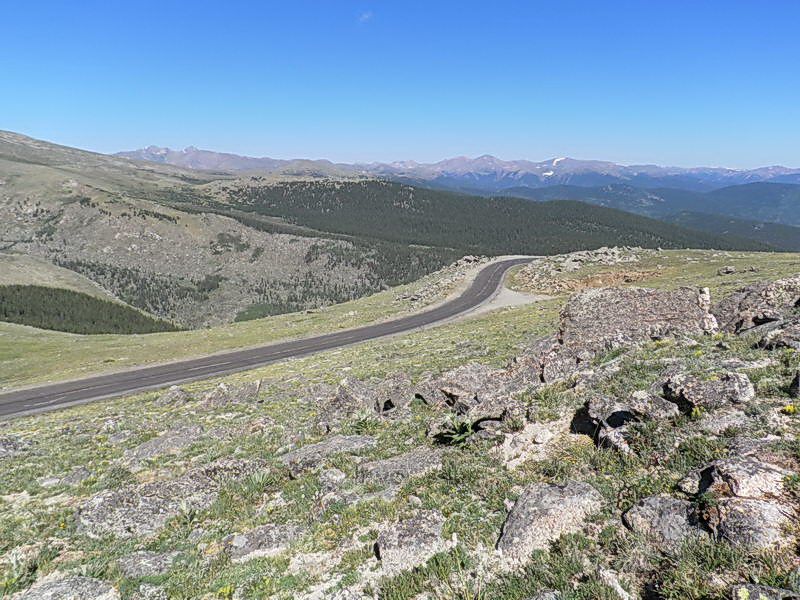
Mount Evans Scenic Byway below, going up all the way to the summit (about 200 feet short of the summit). A view toward north.
To be continued at the second webpage
Photo and story by SNUMA WM - July 10, 2012 |


























































The summer of 2012 was one of the busiest in my personal life as well as in our website.
I didn't have much time or space in my own and in our website to upload some of the events of the summer.
At what appears to be a lull in the hectic busy spells of this summer in our website,
I am uploading a few of my own records for preservation.
Otherwise, they may get forgotten forever as new events unfold continuously out of my control.
I will upload a few webpages under the series-title of [Memoirs of Summer].
Some of these may not be interesting to many of you.
Actually, they are placed here as my personal references in the future days.
If you can enjoy at least a part of them, it will be wonderful.
You may just skip the whole thing or may skim the pictures without bothering the texts.